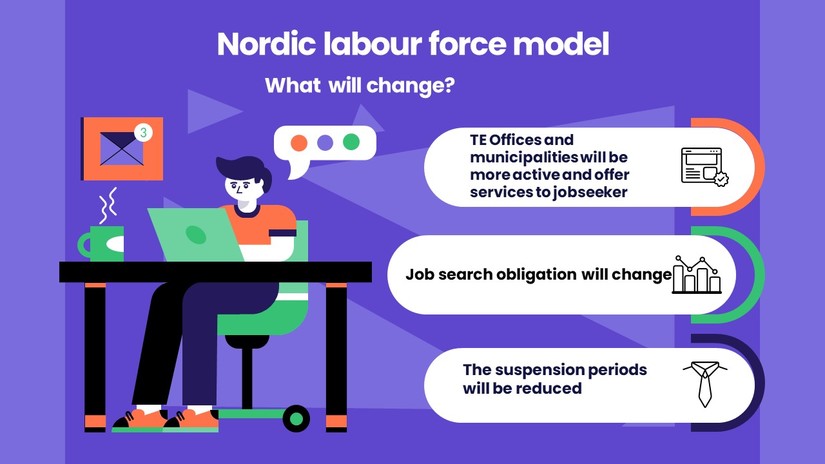TE Offices
and municipalities included in the local government trial will start using the
new customer service model in May 2022. As a result of the change, the service
model of the TE Offices and municipalities will become more active. However, we
would like to emphasise that these are changes in the service model that are
the responsibility of TE Offices and municipalities, so more information on the new obligations can be obtained from the TE
Office or the municipality participating in the local government trial. We present
the changes in a nutshell with a picture.

The
suspension periods will be reduced from 90 days to a maximum of 45 days. A
30-day suspension period can still be set, as well as the newly introduced
short suspension periods of 7 or 14 days.
One of the
new measures in the model is a reminder that Te-office can issue after the
jobseeker’s first act of negligence. The reminder is the first of a 4-step
sanction system. The monitoring period is 12 months. A 7-day suspension period
may be imposed after the second negligence and a 14-day suspension period may
be imposed after the third negligence.
TE Offices
can still impose an employment obligation if the jobseeker refuses mandatory
job offers at least 4 times a year or fails to comply with the measures agreed
in the employment plan. This is the fourth step of the staggered sanction
system.
The fund
does not issue statements to applicants or impose suspension periods, but the
TE Office or the municipality continues to examine and issue statements and impose
obligations.
The new
service model also has a few different names. On the TE Office side, the model
is called the “New customer service model” and on the Ministry of
Economic Affairs and Employment side, the “Nordic labour force
model”.
Useful
links on the topic:
TE Office’s new customer service model
TE Services’ E-services will be transferred to the job marketplace
Frequently asked questions about the Nordic labour force model

